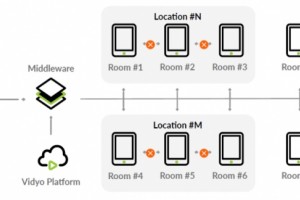UC圣地亚哥摩尔斯癌症中心的研究人员,与来自纪念斯隆凯特琳癌症中心和大通福克斯癌症中心的研究人员已经确定,称为十二指肠 - 空肠曲或DJF的小肠特定区域,显示出具有高频率NF1基因突变的胃肠间质瘤(GIST)。研究结果发表在8月在线JIC精神肿瘤学杂志上。
大约有30%的胃肠间质瘤(GIST)发生的小肠,解剖学,组织学和功能上分为三个不同的部分:十二指肠,空肠和回肠。大多数小肠GIST与KIT突变有关。然而,GIST的一类发生其他突变,如NF1突变。
Moores癌症中心的外科肿瘤学家Jason Sicklick说:“十二指肠过度至空肠时,我们发现NF1过度表达的GIST。
NF1突变可以在体细胞(携带肿瘤 DNA)或胚系(被称为神经纤维瘤病1型[NF-1]的一部分)中。携带NF-1的患者比未携带的个体发生GIST的可能性高34倍。
Sicklick说:“这些病人中的一些患者的基因组检测显示隐匿性胚系NF1突变,没有其他明显的NF-1临床症状。“任何有GIST的人都应进行肿瘤基因检测,而目前只有8%〜15%的患者接受了检测,对于NF1突变患者,遗传性NF-1阳性的患者对家庭成员有影响,因为他们的患癌风险增加,包括GIST。“
根据美国国立卫生研究院的统计,NF-1的特征是皮肤着色和肿瘤沿皮肤神经,大脑和身体的其他部分(如胃肠道)生长。这种肿瘤的体征和症状在患者差别很大。NF-1在全球的发生率为3000到4000人中有1人。
GIST代表胃肠道中最常见的肉瘤类型,美国的年发病率为每百万人6.8例。这些肿瘤从胃肠道壁的特殊细胞开始,称为Cajal(ICCs)的间质细胞。ICCs有时被称为胃肠道的“起搏器”,因为它们传导消化系统中的肌肉蠕动信号,移动食物和液体。
全球肿瘤医生网与目前国内外最大的基因检测公司及最顶尖肿瘤医院合作,可为患者提供“精准治疗”,详情致电400-666-7998或登录全球肿瘤医生网。
Moores癌症中心的Sicklick和同事正在寻求一种个性化治疗逐步耐药的GIST肿瘤的方法。最终,有95%以上耐药GIST的患者死于癌症,这强调了发现其他治疗新靶点的必要性。
Moores癌症中心的医学肿瘤学家博士说:“GIST的患者应该用二代测序分析肿瘤。” “我们发现了一些患者的突变特征,包括KIT突变的患者,一旦出现下游突变可能会使他们对传统靶向治疗不敏感。”
Sicklick补充说:“这项发现帮助医生知道哪些药物将会或将不会起作用,以便妥善治疗这类致命的肿瘤。在NF1突变体GIST中至关重要的是,标准的药物治疗方案是无效的。
Sicklick最近的GIST研究还发现了与GIST患者亚群相关的新基因融合和突变。他和他的团队也提供了第一个证据表明,Hedgehog信号通路是形成GIST的核心,它们经常由KIT致癌基因驱动。
据癌症精准治疗平台全球肿瘤医生网报道,美国目前是癌症精准治疗和癌症基因检测最先进的国家,拥有一批全球顶尖的癌症基因检测公司、顶尖癌症中心和制药厂。据统计,美国已经上市最新癌症靶向药物超过一百种,但国内上市的靶向药物不到50种,诸如雷莫芦甘单抗、瑞戈非尼均未在国内上市。
全球肿瘤医生网精准医疗平台,联合中美顶尖基因检测机构,为国内患者提供可以参加美国癌症探月计划和美国精准医学计划的癌症基因检测,帮助癌症患者在全球范围内寻找靶向药物和临床试验,并通过北肿专家的解读,提供精准治疗方案。详情致电400-666-7998或登录全球肿瘤医生网。
全球肿瘤医生网提醒广大患者,精准治疗不是简单的基因检测,一定是权威基因检测、大数据分析和肿瘤专家的综合分析。癌症患者一定要保持乐观心态,积极配合医生,采用“精准治疗”技术战胜癌症。
本文为全球肿瘤医生网编译,转载请注明来源于全球肿瘤医生网。
https://medicalxpress.com/news/2017-08-gist-tumors-linked-nf1-mutations.html
GIST tumors linked to NF1 mutations, genetic testing needed
Researchers at UC San Diego Moores Cancer Center, with colleagues from Memorial Sloan Kettering Cancer Center and Fox Chase Cancer Center, have determined that a specific region of the small bowel, called the duodenal-jejunal flexure or DJF, shows a high frequency of gastrointestinal stromal tumors (GISTs) with mutations of the NF1 gene. Results of the study were published in the August online issue of JCO Precision Oncology.
The small bowel, where approximately 30 percent of all GISTs occur, is divided into three anatomically, histologically and functionally distinct segments: the duodenum, jejunum and ileum. Most small bowel GISTs are associated with KIT mutations. However, a subset of GISTs have mutations in other genes, such as NF1.
"Where the duodenum transitions into the jejunum, we are finding an over-representation of NF1-mutated GIST," said Jason Sicklick, MD, surgical oncologist at Moores Cancer Center.
NF1 can be mutated both somatically (within tumor DNA) or in the germline (part of the hereditary condition called Neurofibromatosis type 1 [NF-1]). Patients with NF-1 are 34 times more likely to develop GIST than unaffected individuals.
"Genomic testing for some of these patients revealed occult germline NF1 mutations with no other obvious clinical symptoms of NF-1," said Sicklick. "Anyone with a GIST should undergo tumor genetic testing. Currently only 8 to 15 percent of patients get tested. For those patients with NF1 mutations, there are implications for family members of patients who test positive for hereditary NF-1, as they also may be at increased risk of developing cancers, including GIST."
According to the National Institutes of Health, NF-1 is a condition characterized by changes in skin coloring and the growth of tumors along nerves in the skin, brain and other parts of the body, such as the GI tract. The signs and symptoms of this condition vary widely among affected persons. NF-1 occurs in one in 3,000 to 4,000 individuals worldwide.
GIST represents the most common type of sarcoma in the GI tract, with an annual incidence of 6.8 cases per million people in the United States. These tumors start in special cells in the wall of the GI tract, called the interstitial cells of Cajal (ICCs). ICCs are sometimes dubbed the "pacemakers" of the GI tract because they signal the muscles in the digestive system to contract through peristalsis, moving food and liquid through the system.
Sicklick and colleagues at Moores Cancer Center are searching for a personalized approach to GIST tumors that become progressively resistant to treatment. Ultimately, more than 95 percent of patients with drug-resistant GIST succumb to their cancer, highlighting the necessity for alternative therapeutic targets.
"Patients with GIST should have their tumors profiled with next-generation sequencing panels," said first author Adam Burgoyne, MD, PhD, medical oncologist at Moores Cancer Center. "We are uncovering a subset of patients, including patients with mutations of KIT, who have downstream mutations that may render them insensitive to conventional targeted therapy."
Sicklick added: "This insight helps physicians to know which drugs will or won't work in order to properly treat these deadly tumors. Of critical importance in NF1 mutant GIST, standard-of-care drug regimens aren't effective."
Sicklick's recent GIST research has also identified new gene fusions and mutations associated with subsets of GIST patients. He and his team also provided the first evidence that the Hedgehog signaling pathway is central to the formation of GIST, which are frequently driven by the KIT oncogene.







